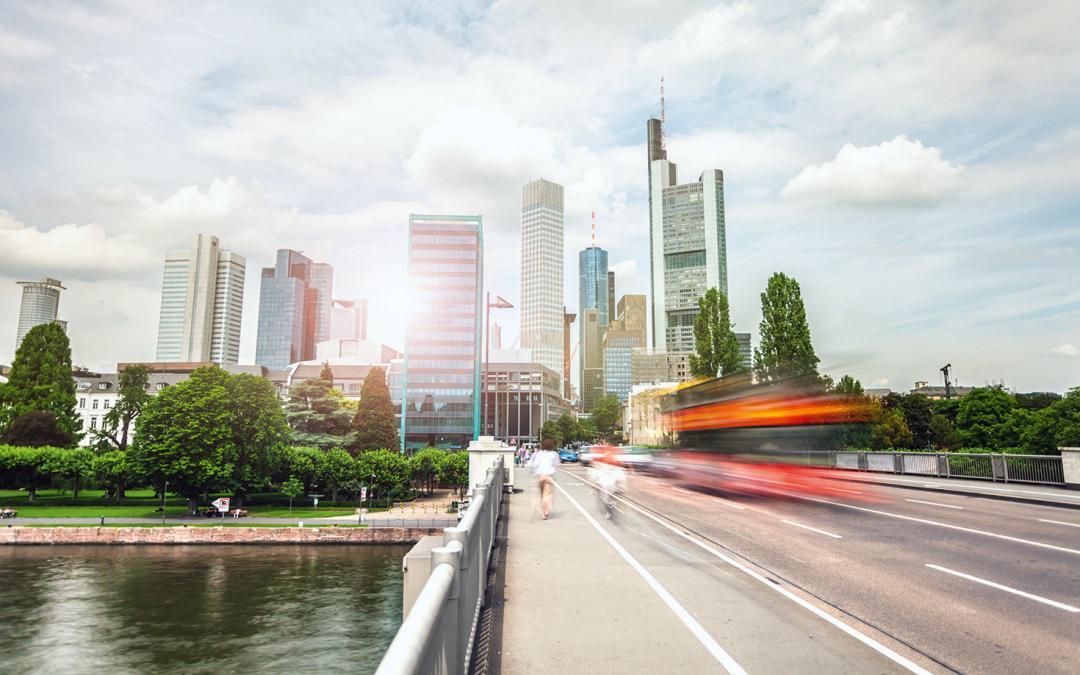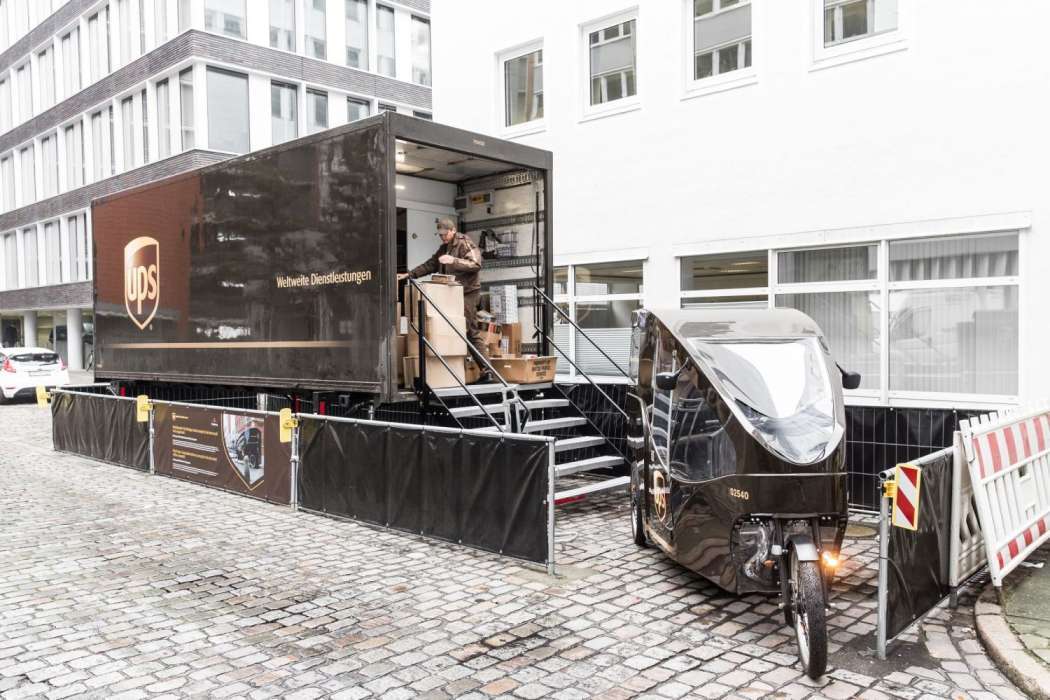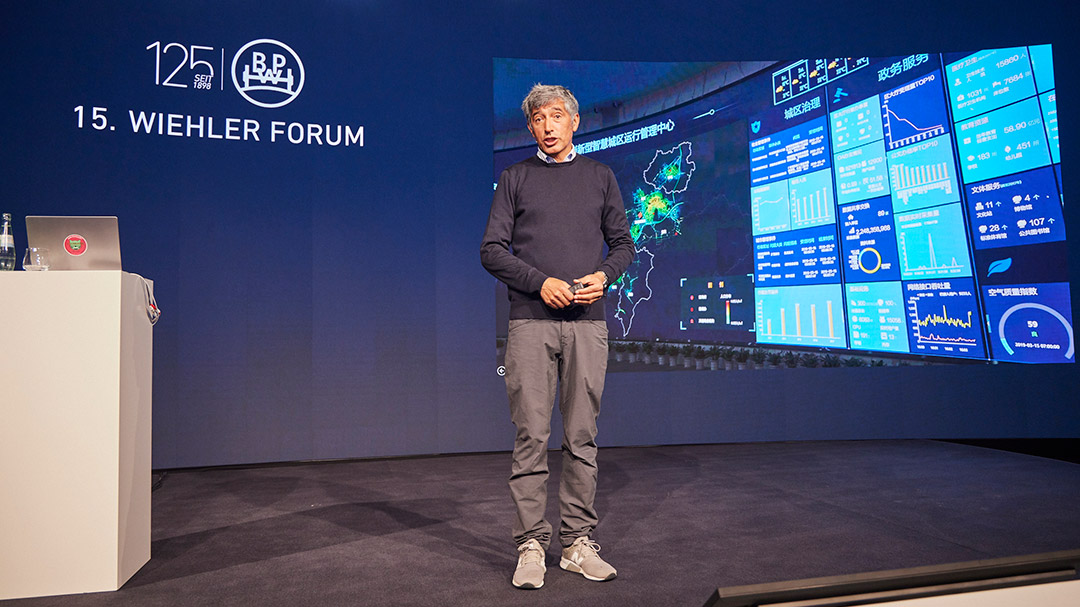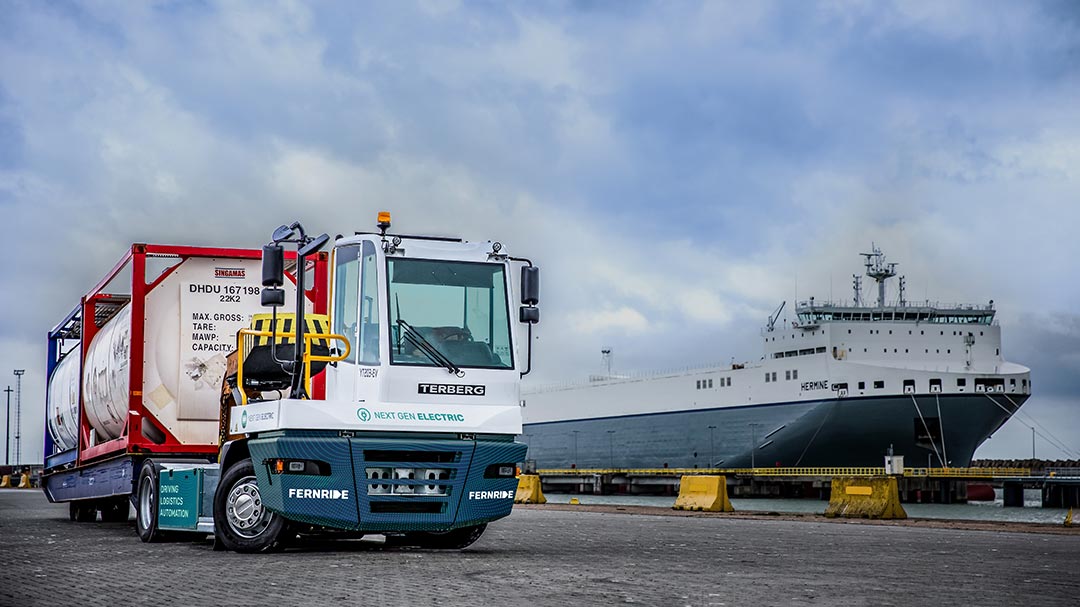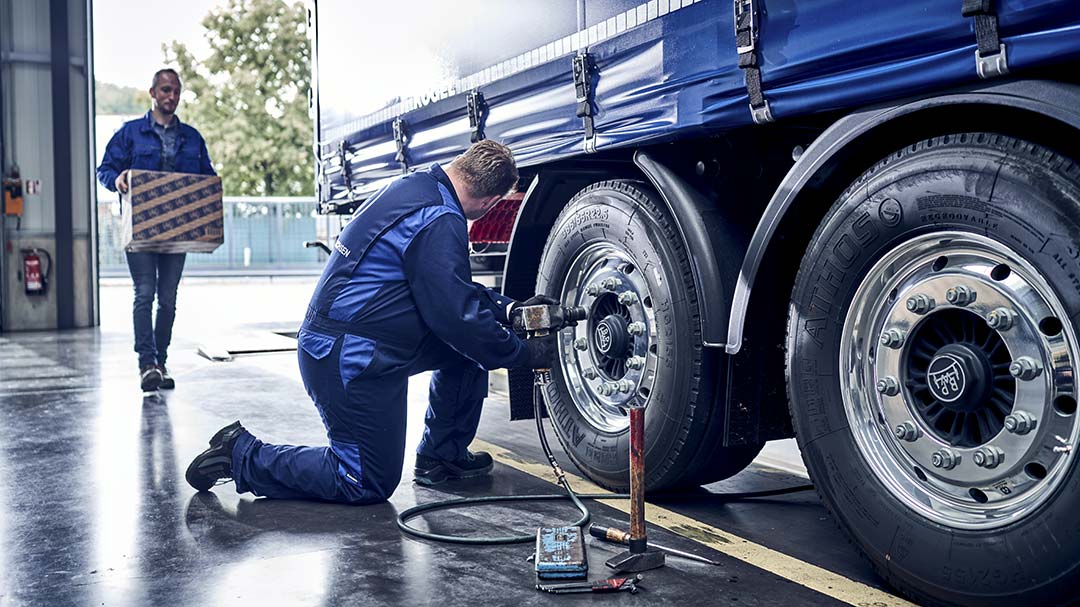With around 730,000 residents, the economic hub of Frankfurt am Main is the largest city in Hesse and the fifth largest in Germany.
Text: Juliane Gringer
Photos: iStock – querbeet, UPS, BPW, Pixabay
Life in the city is becoming more and more convenient, thanks in part to new logistics services. To ensure that these are organised in the most resource-friendly way possible, logistics providers, customers and cities need to collaborate on innovative solutions for the last mile.
Cities are like magnets: they attract people who are looking for variety, education, culture and careers. Logistics services also play a part in the good living conditions in a city, for example with food deliveries right to your front door or quick parcel delivery. At the same time, advancing urbanisation is bringing with it disadvantages as many city centres have to contend with noise, emissions and gridlock. For cities to remain attractive to residents in future, we therefore need smart solutions for intelligent city logistics. The transport industry is also working hard to develop new solutions: ‘As a mobility partner for our customers, we are becoming increasingly involved in last-mile logistics,’ explains Markus Schell, Managing Partner at BPW. ‘It is one of the most exciting topics at the moment and there is going to be a lot happening in future here when it comes to politics, society, technology and regulations.’
There are several technological approaches for dealing with the challenges of the last mile: self-driving vehicles, delivery drones, parcel robots, 3D printing and electric vehicles such as the StreetScooter, which is used for DHL parcel deliveries. It is intended to make delivery transport in the city more flexible, more environmentally friendly and quicker. BPW has developed the electrically powered eTransport axle for installation in heavy delivery vehicles (7.5 t – 26 t permissible total weight) that are used in transport within cities. This enables food and clothes to be brought into the city centre without any emissions, including at night. The fully electric drive and the battery take up very little space in the trucks and so do not affect the original usable load. ‘We have been primarily producing trailer axles for over 100 years. Perhaps that is why we were particularly clear-minded when we were thinking about a possible drive,’ says Markus Schell, explaining the innovative approach. The prototype generated a great deal of attention right from its unveiling at the IAA 2016. BPW subsequently built up an interdisciplinary team that deals in-depth with potential future scenarios and will develop relevant products and services from this basis. There are now ten vehicles fitted with BPW technology being trialled on Germany’s roads.
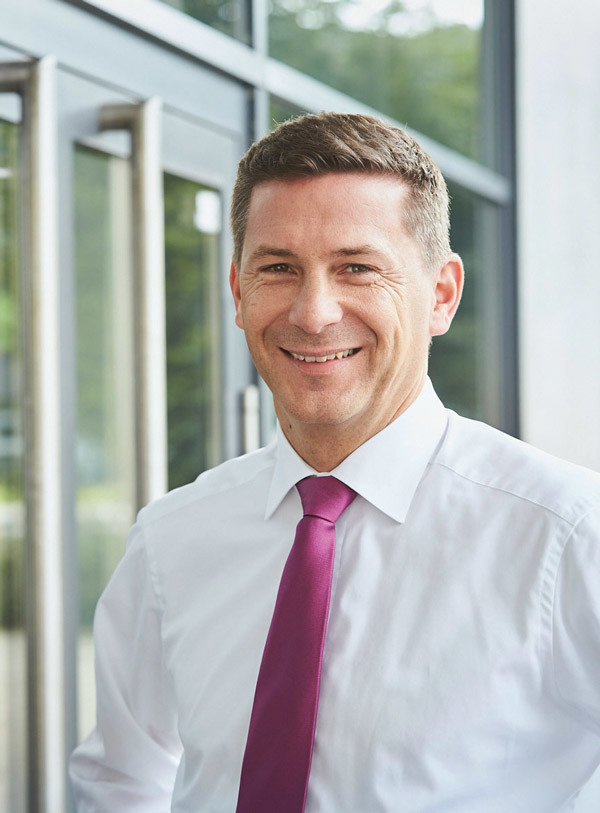
»We have been primarily producing trailer axles for over 100 years. Perhaps that is why we were particularly clear-minded when we were thinking about a possible drive.«
Markus Schell, Managing Partner at BPW
»We have been primarily producing trailer axles for over 100 years. Perhaps that is why we were particularly clear-minded when we were thinking about a possible drive.«
Markus Schell, Managing Partner at BPW

The exchangeable container option is being used with virtually no power in Hamburg, for example. UPS launched a multi-award-winning pilot project in the city in 2015. The containers in the project were used as micro depots in the city centre and they were set down with a full load of around 400 parcels each morning. The delivery workers then delivered the parcels to the recipients on foot, by cargo bike or by electric bike. UPS saved up to ten delivery vehicles and over 500 stops a day by doing this – and a distance of 800 kilometres was switched to zero-emission delivery. ‘The experience with the pilot project is overwhelmingly positive,’ says Richard Lemloh, spokesperson for the Hamburg Ministry for Economics, Transport and Innovation. ‘We see the approach as an excellent way of minimising the negative impacts of delivery traffic on city traffic and the air.’ The project was backed up with an academic study. The authors recommend expanding the network and quickly finding new locations for other micro hubs – such as in multi-storey car parks or at local transport stops. They also recommend appointing a coordinator to focus on working with the specialist authorities. Richard Lemloh says: ‘We are convinced that appropriate hub concepts are key to the successful implementation of sustainable city logistics concepts.’
The pilot project from central Hamburg is catching on: UPS is using the mobile parcel containers and delivery by cargo bike in Munich, Frankfurt, Oldenburg, Karlsruhe and other locations.
Combining growth and quality of life
Integrating these hubs demands close cooperation with the cities. According to Franz-Reinhard Habbel, spokesperson for the German Association of Towns and Municipalities, integrated urban development is the model of the future. This envisages integrated planning processes and brings together everything concerning the economy, transport, climate and the conservation of resources in the urban environment. ‘City logistics concepts are an important part of this,’ says Habbel. He believes that a strategic approach is key: ‘You need to combine growth and quality of life.“
Germany covers a large area with a few major cities and a large number of towns in rural areas. Between Kiel in the north and Kempten in the south, there are around 11,000 municipalities, of which 75 per cent have fewer than 12,000 residents. ‘Logistics has to deal with very diverse requirements here,’ says Habbel. ‘At the same time, completely new opportunities are arising in the context of digitalisation.’ Habbel believes that cities have realised that providing infrastructure is an important task for them. There is a huge amount of catching up to do; the expert estimates that the appropriate measures will cost 136 billion euros. ‘And the cities know that they will have to grapple more and more with the topic of mobility in the coming years,’ says Habbel.
Increasing speed and individuality
These issues are particularly relevant when it comes to the ongoing boom in online trade. This accounted for 65.1 billion euros of turnover in 2018, which the German E-Commerce and Distance Selling Trade Association (bevh) recorded as yet another two-figure growth rate at 11.4 per cent. Consumers love convenience and they have all manner of goods delivered to their doors. Whether it is clothing, technology, furniture or food from a favourite restaurant, everything is expected to arrive as quickly as possible and ideally at a time of their choosing.
By being the first mover, online giant Amazon is currently dominating the same-day business in Germany. It delivers orders on the same day and even offers a one-hour service in Berlin and Munich. But even this is picking up pace. Take Japan, for example, where customers of Rakuten, the world’s third-largest Internet retailer have been able to use a super-express service since 2015. Orders are delivered around the clock to selected city districts within just 20 minutes.
More and more parcels and – at the same time – more and more service means a big strain for large cities. Is a collapse looming? ‘Cities have to hold out,’ believes Sebastian Leder. ‘Unless we believe that drones will be flying around all over the place soon. But even then, the airspace would soon be overcrowded. I don’t think there will be any restrictions on delivery in future either.’ He sees just one solution: ‘To deal with the growing volume, delivery transport needs to switch to autonomous, technology-based transport concepts in the medium term.’
Many cities are already working on the topic of electric mobility for the last mile. Frankfurt am Main, for example, decided to take a pioneering role back in 2009 and has brought together all its activities in the ‘Frankfurt-e-mobil’ initiative: ‘The cities have a really high level of motivation in this area but they also need expertise and skills from outside,’ says Franz-Reinhard Habbel. ‘It’s about knowing how to establish the relevant concepts.’ There is mounting pressure to act as more and more restrictions for vehicle access are being introduced. Rotterdam is a trailblazer, having decided that from 2020, only zero-emission delivery vehicles will be permitted to enter its central zone.
High-frequency delivery transport
All delivery transport needs to be switched – not just parcel vehicles. As well as the common delivery company vans that are often a prominent feature of the cityscape, plenty of other delivery vehicles are also bringing goods to restaurants, bakeries, pharmacies, bookshops, offices and other businesses – sometimes making several visits a day. ‘There are around 1,500 deliveries like this in Hamburg every day,’ says Horst Manner-Romberg, general manager of MRU GmbH, which provides market research and consulting for post, express, courier and parcel services. He watches this himself from the window of his office in Hamburg city centre: ‘There are eight restaurants on our road and they all have different suppliers. The meat delivery comes first, then the 30-tonne truck with the soft drinks and straight after that the van with the spirits.’ He envisages new concepts for the future that incorporate all forms of delivery. In London, for instance, one restaurant takeaway delivery service is cooperating with one of the biggest wine merchants. This means that the customers can order restaurant food plus wine, champagne or beer from a single source. ‘Cross-segment transport like this is certainly going to see strong development.’
hours per year was the average time spent in traffic jams by people in Stuttgart in 2018 – putting the city at the top of the ranking across Germany.
Source: INRIX
At least
cities exceeded the EU limit for harmful nitrogen dioxide (NO2) in 2018 in Germany.
Source: German Environment Agency
hours per year was the average time spent in traffic jams by people in Stuttgart in 2018 – putting the city at the top of the ranking across Germany.
Source: INRIX
At least
cities exceeded the EU limit for harmful nitrogen dioxide (NO2) in 2018 in Germany.
Source: German Environment Agency
Demand for data transparency
There is still great potential in consolidation and collaboration. ‘Goods will be bundled and people will move differently in cities in future,’ says Matthias Hormuth, Director Solution Management Logistics at the PTV Group. His company offers Mobility as a Service and helps cities with optimum transport planning. ‘Software plays a key role here.’ Digital support enables transport, fleets and capacities to be optimised and trips to be better planned and managed – while also offering a high level of service, conserving resources and remaining cost-efficient. ‘If I know the time and place of specific traffic, I can take that into account in my planning.’ He highlights that this requires a smooth exchange of data. ‘Until now, the main catch was the heterogeneity of the data sources,’ says Hormuth. ‘But the data is technically available and it wouldn’t be so much work to neutralise the differences and bring it together.’
Sebastian Leder believes that if cities also released information, a wide range of opportunities for optimisation would become possible: ‘There is definitely still some treasure to be found; you could offer completely new services.’ Concepts for this need not come from the cities themselves either – start-ups could also play a role. ‘This requires the openness to permit even greater innovation and make the relevant administrative structures accessible to people who can be involved in the thought processes and perhaps develop new solutions. Sebastian Leder sees potential in Berlin, for example: ‘The city could potentially become a testing area for autonomous driving.’
Cooperation between players
Franz-Reinhard Habbel has a similar view. ‘It will become even clearer in the coming years that whoever has the data has the power to shape things. This will lead to new economic cooperation and will improve quality of life. In the city of the future, flows of goods will be bundled and there will be a level of data transparency that will enable totally new business models, will ease the pressure on the roads and so will conserve resources.’ Habbel cites flexibly controlled traffic lights as one example of this. Sebastian Leder from Deloitte focuses on intelligent buildings: ‘If they link with partner buildings, we could also use them to manage traffic and logistics and so counteract overcrowding in the city.’ He sees greater cooperation between those involved as important: ‘There needs to be close collaboration between the logistics industry, the delivery vehicle and the recipient.’

